Musée d’art Ilmin (일민미술관)
1.4Km 1285 2022-09-27
1, Cheonggyecheon-ro, Jongno-gu, Seoul-si
Le musée d’art Ilmin se situe dans l’ancien bâtiment du journal Dongah. Le journal Dongah a été crée en 1926 et siègea dans ce lieu pendant 66 ans. Il représente le plus ancien bâtiment de presse en Corée. Il a été fermé pendant un an pour cause de travaux de rénovation et a été réouvert en 1996. Le musée a gardé son sol en carrelage et ses murs de verre malgré les années.
De la dynastie Goryeo (918-1392), il y a 430 pièces de la collection Ilmin(M. KIM Sang-Man) et 1200 pièces de la collection d‘art du journal Dongah, et 100 pièces d’art appartenant à la société Hyundai.
Cette collection provient surtout de Kim Sang-Man. La plupart des pièces sont des peintures. Or certaines oeuvres sont importantes pour l’histoire. La collection Hyundai contient particulièrement des peintures de critiques sociales. Au sous-sol se trouve une boutique d’objets d’art où il y a aussi des peintures originales.
The Place Seoul (traditional Korean-style guesthouse) [Korea Quality] / 멀티스페이스 곳 [한국관광 품질인증]
1.4Km 600 2019-12-05
52-11, Gyedong-gil, Jongno-gu, Seoul
+82-10-3255-1289
“The Place Seoul” is located in a small alley in Gyedong-gil, Jongno-gu, Seoul. It is a guesthouse made by remodeling an 80-year-old traditional Korean house. The ondol room furnished with traditional beddings is popular not only among foreigners but also among Koreans due to its special ambience. The ceiling of the room dates back to 80 years ago. The rafter put on the roof at the time of construction of the house shows the antiqueness of the house. The toenmaru (a narrow wooden porch running along the outside of a room) that comes alive with the frequent coming and going of people adds to the ambience of the traditional Korean house, with the Sansuyu (corni) tree and vegetable garden beside the Korean-style house creating a leisurely atmosphere.
Beyond being a mere place to sleep in, “The Place Seoul” aims to be a composite cultural space whose motto is “the place to fill.” A simple wedding or a small-scale performance is held in the garden during the day. The rooms can be rented for small meetings.
“The Place Seoul” sponsors “WWOOF KOREA,” an NGO promoting environment-friendly agriculture as well as the right dietary life, “Slow Food Korea,” and “Slow Box.” As such, the place serves a special healthy breakfast consisting of homemade bread, handmade yogurt, and organic fruits and vegetables. In addition, the toilet paper, detergent, shampoo, etc. provided are all environment-friendly products.
“The Place Seoul” is located on Gyedong-gil Road, a famous tourist attraction in Seoul. It offers easy access to Bukchon Hanok Village, which is on the other side of the Gyedong-gil alley, as well as other major tourist attractions within walking distance including Changdeokgung Palace, Gyeongbokgung Palace, Samcheong-dong, and Insa-dong. The convenient location of “The Place Seoul” makes it easy to tour downtown Seoul.
Museé d'art Hwangi (환기미술관)
1.4Km 1606 2021-03-27
63, Jahamun-ro 40-gil, Jongno-gu, Seoul-si
+82-2-391-7701
Le Musée d’art Hwangi (환기미술관) a été ouvert dans le but de rendre un hommage au peintre Kim Hwan-Gi (1913-1974), un des artistes coréens les plus réptés dans le style du modernisme.
Il commença par la peinture abstraite en 1930 et en 1950 en se servant de la nature comme inspiration afin de peindre les émotions de la Corée.
Au premier étage du musée vous trouverez une boutique d’art avec des écharpes, des cravates et autres produits dessinés par Kim Hwan-Gi qui sont mis en vente.
Jirisan Restaurant (지리산)
1.4Km 27614 2019-08-01
30, Insadong 14-gil, Jongno-gu, Seoul
+82-2-723-4696
Jirisan is one of the representative Korean restaurants in Insa-dong, an area known for its traditional culture. One of the trademarks of this restaurant, besides its amazingly delectable bean and tofu dishes, is a wooden sign that welcome guests into a neat and cozy interior.
Each day, fresh beans are ground at the restaurant to prepare dishes such as soybean paste, soft tofu, and bean-curd tofu stew. Bean-curds are prepared by using seawater, which gives the tofu a unique flavor. The fresh and clean taste of the tofu is one of the many reasons that choosey tofu aficionados flock to the restaurant.
Not just limited to tofu, Jirisan presents customers with a full-range of side dishes such as kimchi, japchae (glass noodles with sautéed vegetables), cucumber kimchi, seasoned seaweed, braised lotus roots, roasted yellow corbinas (a type of fish), leafy greens, bean-curd stew, and more. The restaurant gives visitors a chance to experience a hearty traditional Korean-style meal, but has thoughtfully toned down its seasonings to appeal to a wider audience (particularly those not used to spicy foods).
One of the recommended menu items is the Jirisan set meal, which offers diners the chance to sample foods that are popular in the Jirisan region. Adventurous diners may want to try the sea urchin soup or dried Pollack soup.
The restaurant, originally a traditional Korean house, has been modified over the years to better suit the needs of its customers. The walls surrounding the structure were removed and a glass ceiling was installed to allow guests to enjoy the natural light of the sun as they sample some of the area’s best traditional Korean cuisine.
Bukchonmaru hanok guesthouse [Korea Quality] / 북촌마루한옥게스트하우스 [한국관광 품질인증]
1.4Km 17946 2020-09-10
152, Changdeokgung-gil, Jongno-gu, Seoul
+82-10-3253-8751
Bukchonmaru Hanok Guesthouse is located between “Bukchon Views 2 and 3” on a hill in Bukchon Village in Seoul. This two-storied hanbok building with a terrace, which is rarely found among other hanok structures in the area, offers a splendid view of Seoul. In particular, the summit of a hill next to the main gate of Choong Ang High School where the guesthouse is situated is known as the filming location for the famous Korean TV series Winter Sonata (2002). When you open the main gate and go up to the first floor, a small yard is seen with a group of jars on one side. After entering the sliding door through the yard, there is daecheong maru (main floored room) that features the doors opening in all directions and a high ceiling with rafters, making the space open and cozy. The hanok building consists of two floors – the ground floor is equipped with special furniture, a jar table and a log chair made by the owner, and on the first floor are guestrooms comprised of one large room and two small rooms. The neat and clean rooms are designed in a simple way and have lovely bedding with the pattern of five cardinal colors. Its staff members can speak English and Chinese to communicate with guests from other countries. Every morning, guests engage in animated conversation while enjoying a Korean home-style breakfast prepared by the owner in a friendly atmosphere. After having breakfast, if guests want, they can try on traditional Korean clothes (hanbok) and take photographs inside and around the guesthouse to create interesting memories. The guesthouse also provides a hanbok rental service (KRW 30,000 for a day) and tourists wearing traditional Korean clothes can enter both Changdeokgung Palace and Gyeongbokgung Palace, which can be reached on foot within 10 to 15 minutes, free of charge. Moreover, guests can enjoy an open view of the area including Gahoe-dong, Gye-dong and even the lights of the Namsan Seoul Tower at night from the roof top.
Onion Anguk (어니언 안국)
1.4Km 0 2024-04-09
5 Gyedong-gil, Jongno-gu, Seoul
Onion désigne un café situé dans un hanok datant des années 1920. Le bâtiment a été rénové afin de préserver l'aspect du daecheongmaru et de l'espace madang (espace de la cour) permettant ainsi de profiter des charmes de l'architecture traditionnelle en Corée. Le menu signature est le menu 'vanilla bean latte' ainsi que divers desserts le pain au beurre salé et le gâteau pandoro. L'établissement présente également l'avantage de se situer à proximité de sites touristiques réputés comme le palais Gyeongbokgung, le palais Changgyeonggung ainsi que le palais Changdeokgung.
Okjeong (옥정)
1.4Km 20936 2021-03-19
18, Insadong, 12-gil, Jongro-gu, Seoul
+82-2-733-5412
A traditional Korean restaurant serving hanjeongsik (Korean table d'hôte) for 30 years now. The representative menu is Korean table d''hote. This is a Korean cuisine located in Insa-dong, Seoul.
Nuri (누리)
1.4Km 7603 2019-11-26
23, Insadong 14-gil, Jongno-gu, Seoul
+82-2-736-7848
Located in the neighborhood of Insa-dong, traditional Korean lunch box and tea restaurant Nuri brings out the true beauty of hanok while implementing western dining culture with tables and chairs.
Nuri uses the finest grains directly from agricultural regions throughout the country, offering nutritious rice along with mildly seasoned side dish menus, taking advantage of the ingredients' natural flavors. Nuri uses its effective take-out and delivery system to cater to businesses and events.
853 (팔오삼)
1.4Km 77 2021-03-24
16, Insadong, 12-gil, Jongno-gu, Seoul
+82-70-8832-0853
This is a juicy pork restaurant. This Korean dishes restaurant is located in Jongno-gu, Seoul. The most famous menu is grilled pork belly.
Village musée de la porte Donuimun (돈의문박물관마을)
1.5Km 0 2024-07-26
14-3, Songwol-gil, Jongno-gu, Séoul
Le village musée de la porte Donuimun est un village historique et culturel situé au cœur de la ville. Ce lieu, né de la régénération urbaine de Séoul, possède une grande valeur historique en tant que premier quartier que l'on trouve en entrant dans la vieille ville de Séoul par la porte ouest des murailles Hanyangdoseong. C'est un témoin de la vie et des souvenirs de Séoul.
Ce village, ainsi que le quartier voisin de Gyonam-dong de l'arrondissement de Jongno-gu, a été sélectionné comme zone de la « Donuimun New Town » en 2003. Il était prévu de démolir tous les bâtiments existants dans cette zone et de créer un parc. Cependant, en tant que premier quartier à l'intérieur de la porte ouest des murailles Hanyangdoseong, la ville a voulu promouvoir la valeur historique du quartier de Saemunan et préserver le site tel un village musée. Ainsi, la ville de Séoul a émis le souhait plus global de créer un site historique et culturel important pour ses habitants. Dans ce cadre, les bâtiments du village ont été rénovés en conservant leur apparence originale alors qu'une grande cour a été créée à la place de plusieurs maisons. Les bâtiments modernes et contemporains, les hanoks urbains et les ruelles centenaires sont restés dans leur état initial aux mêmes endroits afin de devenir un nouveau lieu culturel où de nombreux visiteurs peuvent désormais se rendre.
Actuellement, le village musée de la porte Donuimun accueille les visiteurs après avoir été rénové sous le thème des « 100 ans de Séoul, terrain de jeux pour un voyage dans le temps ». Les 40 bâtiments existants ont été laissés tels quels alors qu'un espace « participatif » a été créé où des expositions, des programmes d'activités, des spectacles et des marchés se tiennent tout au long de l'année afin de nourrir l'identité de « village musée vivant » qui était l'objectif principal de la création de ce village.
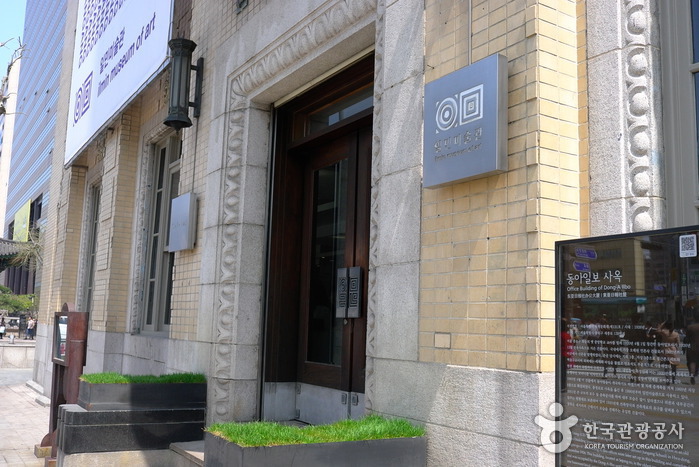
![The Place Seoul (traditional Korean-style guesthouse) [Korea Quality] / 멀티스페이스 곳 [한국관광 품질인증]](http://tong.visitkorea.or.kr/cms/resource/68/2631068_image2_1.jpg)
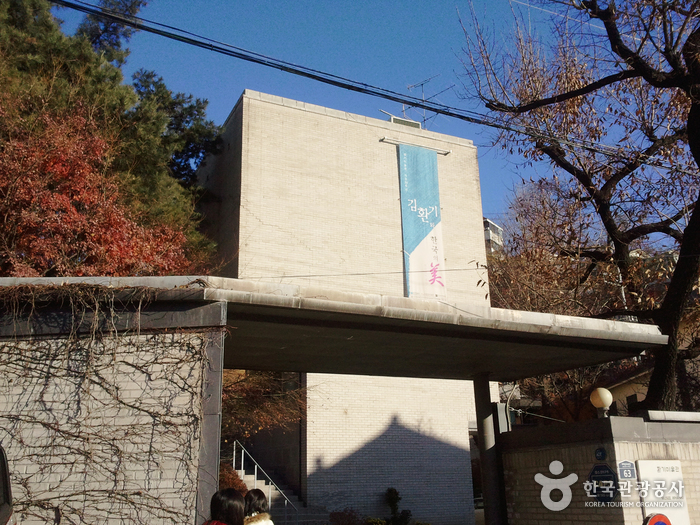
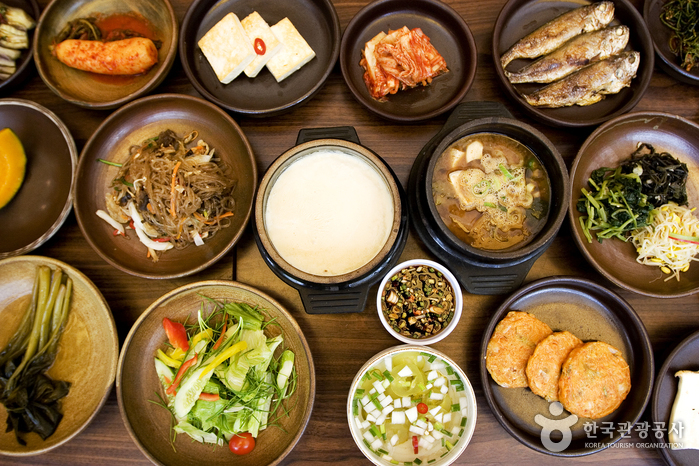
![Bukchonmaru hanok guesthouse [Korea Quality] / 북촌마루한옥게스트하우스 [한국관광 품질인증]](http://tong.visitkorea.or.kr/cms/resource/32/2574032_image2_1.jpg)
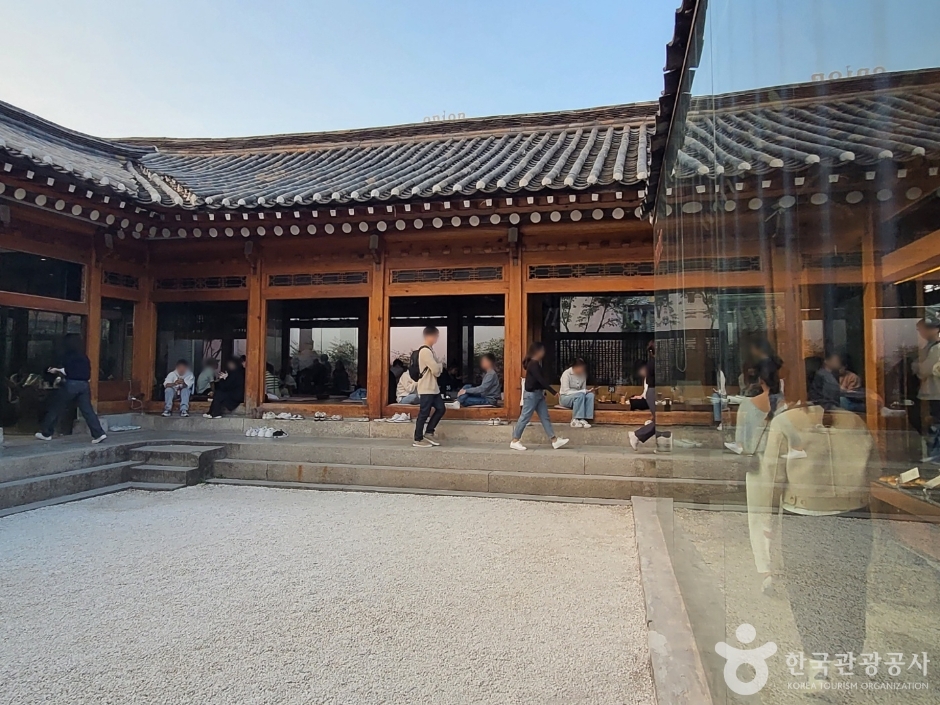
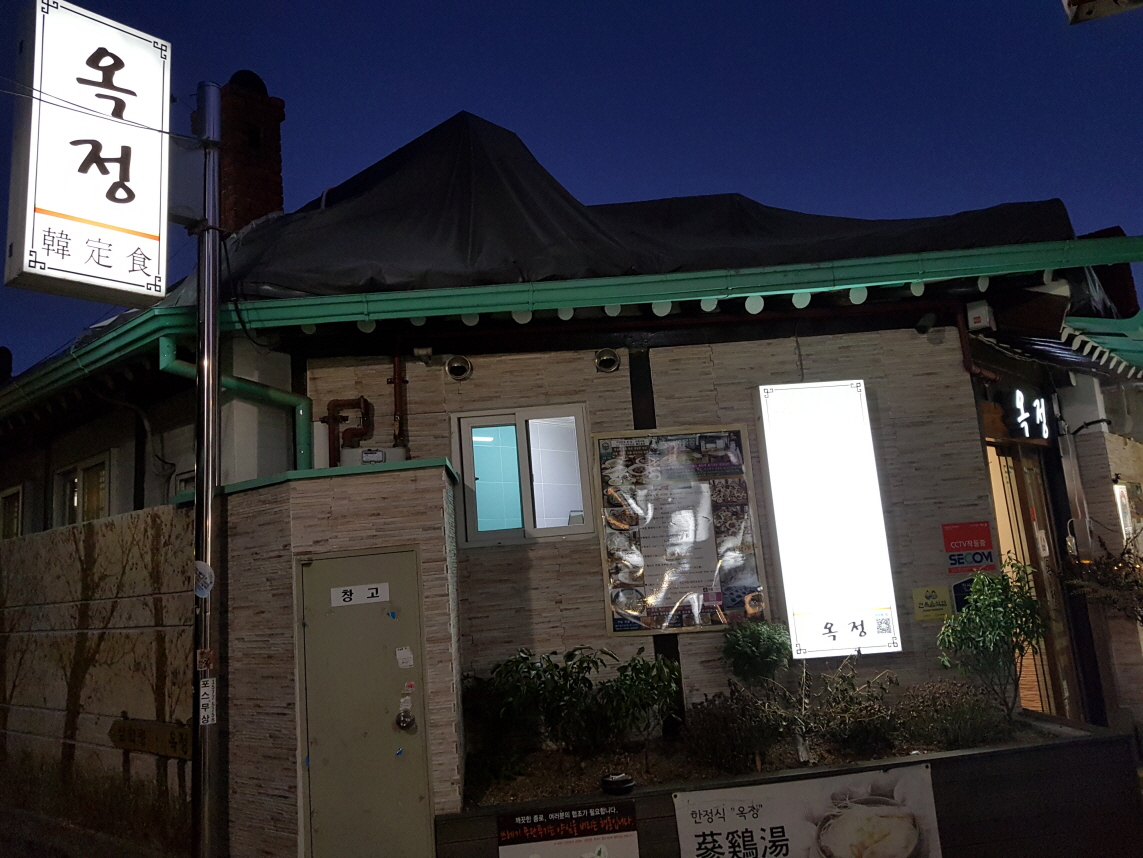
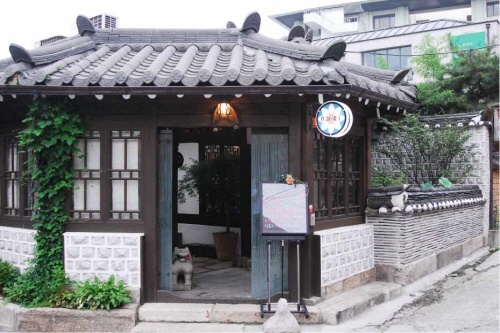
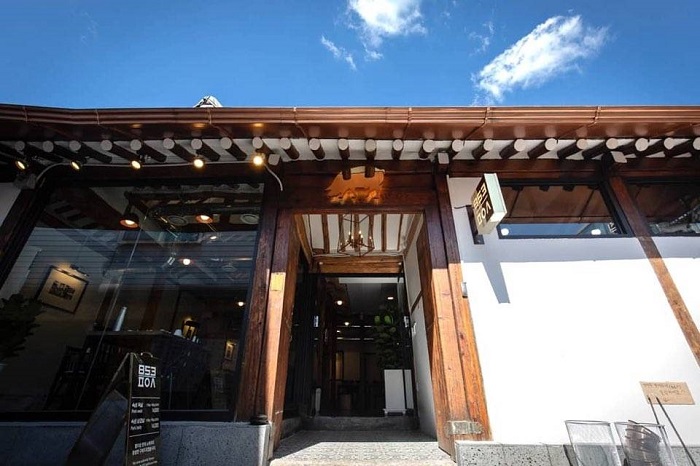
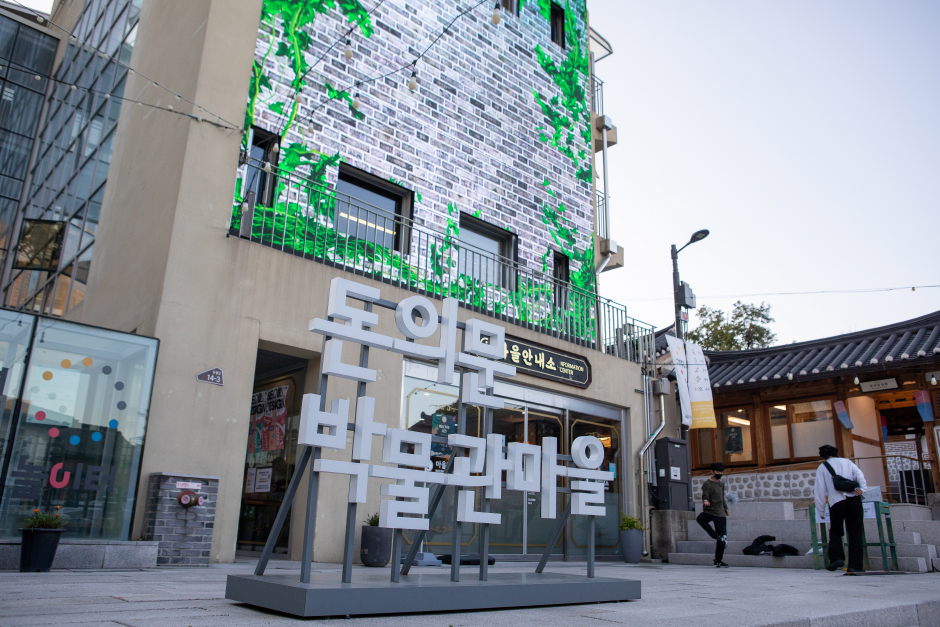
 Français
Français
 한국어
한국어 English
English 日本語
日本語 中文(简体)
中文(简体) Deutsch
Deutsch Español
Español Русский
Русский